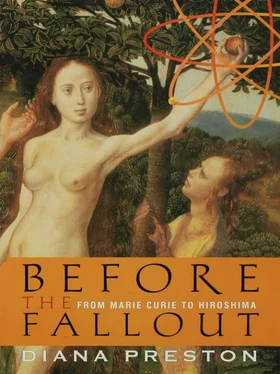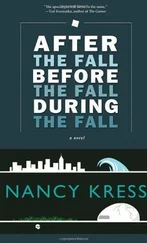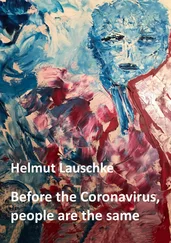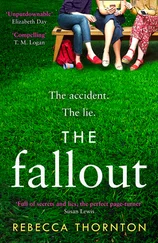Rutherford conducted a final suite of alpha-particle-scattering experiments to check his hypotheses and then, in early 1911, announced to his startled colleagues his discovery of the atomic nucleus. It was, as one later recalled, a “most shattering” revelation.
IF 1911 was a triumphant year for Rutherford, it was an annus horribilis for Marie Curie. Since her husband’s death in 1906, she had scored two notable coups. In 1908 she was finally given the full rank of professor of physics at the Sorbonne. That same year, she coaxed and bullied the university and the Pasteur Institute into cofounding a radium institute, which comprised a laboratory of radioactivity (under her direction) and a laboratory of biological research and Curietherapy (the use of radium to treat cancer and other diseases). Yet she remained a retiring individual who flinched from the limelight. When she learned that the International Congress on Radiology was to meet in Brussels in the autumn of 191 o to establish an International Radium Standard—a physical benchmark specimen against which radium to be used in industry, medicine, and research could be measured—she was reluctant to go. She consulted Rutherford, who sensibly advised that, as the figurehead for radium, she had to be there.
The congress endorsed Marie’s unique authority by agreeing that she should prepare the standard and that the unit in which measurements were to be made against the standard should be named the “curie.” However, arguments broke out over the definition of the unit. An angry Marie believed that she, and she alone, should decide the parameters. A female Swedish scientist had been correct in observing that Marie Curie regarded radioactivity as her “child” that she had “nourished and educated.” She resented the interference of others. When Marie failed to get her way, she claimed she was too unwell to continue debating and withdrew. Finally she prevailed, but her stubbornness had roused considerable and lasting resentment. Rutherford, who considered her genuinely frail and “very wan and tired and much older than her age… a very pathetic figure,” was one of her few defenders.
Rutherford would meet Marie Curie again the following year, when the Belgian industrialist and entrepreneur Ernest Solvay invited thirty leading physicists to the first Solvay Conference, held in Brussels. The conference’s primary purpose was to debate a revolutionary scientific idea: quantum theory.
• • •
The theory’s rather apologetic creator was the German physicist Max Planck. This melancholy-eyed scientist had been investigating how hot solids radiate heat since 1897. He realized that he could make sense of his experimental findings only if he assumed that heat was emitted in “energy parcels,” or separate “quanta,” as he called them, from the Latin meaning “how much.” The conservative Planck cautiously called his findings a “hypothesis” rather than a “theory” when he first published them in 1900. His problem was that, while on the one hand his hypothesis worked, on the other it conflicted with the established laws of physics, which decreed that energy was emitted in an uninterrupted flow, not discrete packets. Planck was in the paradoxical, but not unique, position of having discovered something intuitively that he did not understand fully in logic.
Albert Einstein had the visionary brilliance to grasp what Planck could not. Challenging, analyzing, and stepping outside the conventional bounds of life and thought came naturally to him. Brought up in a secular, free-thinking Jewish family in Germany, the son of an engineer, he had quickly rejected what he considered the militaristic character of German education, where children marched and drilled like small soldiers. He completed his education at the Zurich Polytechnic Institute, where he studied mathematics and natural sciences. With his thick dark hair and shining dark brown eyes he exuded both energy and a potent sensuality. In 1903 he married Mileva Marie, a Serbian also studying at the institute. She was four years older and apparently walked with a limp. A daughter, Lieserl, born to them the previous year and whose existence came to light only in 1987, either died in infancy or was adopted.
Failing to find a permanent academic post, in 1905 Einstein took a job as a patent examiner in the Swiss patent office in Bern. In his spare time he read Planck’s work and found it a revelation. “It was,” he later wrote, “as if the ground was pulled from under one.” Realizing that quantum theory explained some hitherto inexplicable phenomena, he worked to confirm and extend it. In particular, he applied the theory to the “photoelectric effect”—the way that light colliding with certain metals expelled a shower of electrons. Just as Planck had found with heat, Einstein realized that his experimental findings could be explained if he assumed that light was not a smooth, wavelike phenomenon as previously thought but was emitted in tiny, discrete “energy quanta”—separate packages more akin to tiny bullets. [9] His discoveries about the properties of light would eventually lead to the development of television.
The year 1905 was a fertile one for the twenty-six-year-old Einstein in other ways. His facility for thinking the unthinkable had led him to not only uphold Planck’s quantum theory but also to the discoveries on relativity for which he is best known. Since the days of Galileo and Newton, scientists had believed that objects at rest and objects moving straight and at constant speed behaved in the same way. However, James Clerk Maxwell’s theories suggested that light was an exception to this principle, so that measurements of the velocity of light would vary depending on the effects of motion. Einstein, however, believed intuitively that the velocity of light did not vary. One morning he awoke feeling as if a tempest was raging in his mind but that somewhere in the maelstrom were the answers he had been seeking. As he later put it, “The solution came to me suddenly.” It was nothing less than a revolutionary analysis of space and time.
Einstein described his theory in one of five remarkable papers he published that year in the leading German physics journal, the Annalen der Physik. It was called “On the Electrodynamics of Moving Bodies.” He postulated how light traveled from place to place with the same velocity regardless both of direction and of whether the source of light was moving relative to the person observing it. This was Einstein’s “special relativity theory,” which, as C. P. Snow wrote, “quietly amalgamated space, time and matter into one fundamental unity.” It was the first step on the path to his “general theory of relativity.”
Einstein’s three-page supplement to the paper, added as an afterthought, argued that if a body emits energy, then the mass of that body must decrease proportionately—in other words, that light transfers mass. He articulated the ideas that he would soon express in the world’s most famous equation: E = mc 2 —energy is equal to mass times the speed of light squared. Einstein’s groundbreaking insight was that energy and mass were not separate phenomena but interchangeable. Each could be converted into the other, and the speed of light was the conversion factor. Implicit in E = mc 2 was the potential for enormous amounts of energy to be squeezed from tiny amounts of mass, given the enormous size of the conversion factor. [10] The speed of light is 670 million miles per hour, and the huge factor obtained by squaring it means that just a single pound of matter, if wholly converted to energy, would be equivalent to burning over a million tons of coal.
However, more than thirty years would pass before scientists would finally grasp how to access that energy.
Читать дальше












